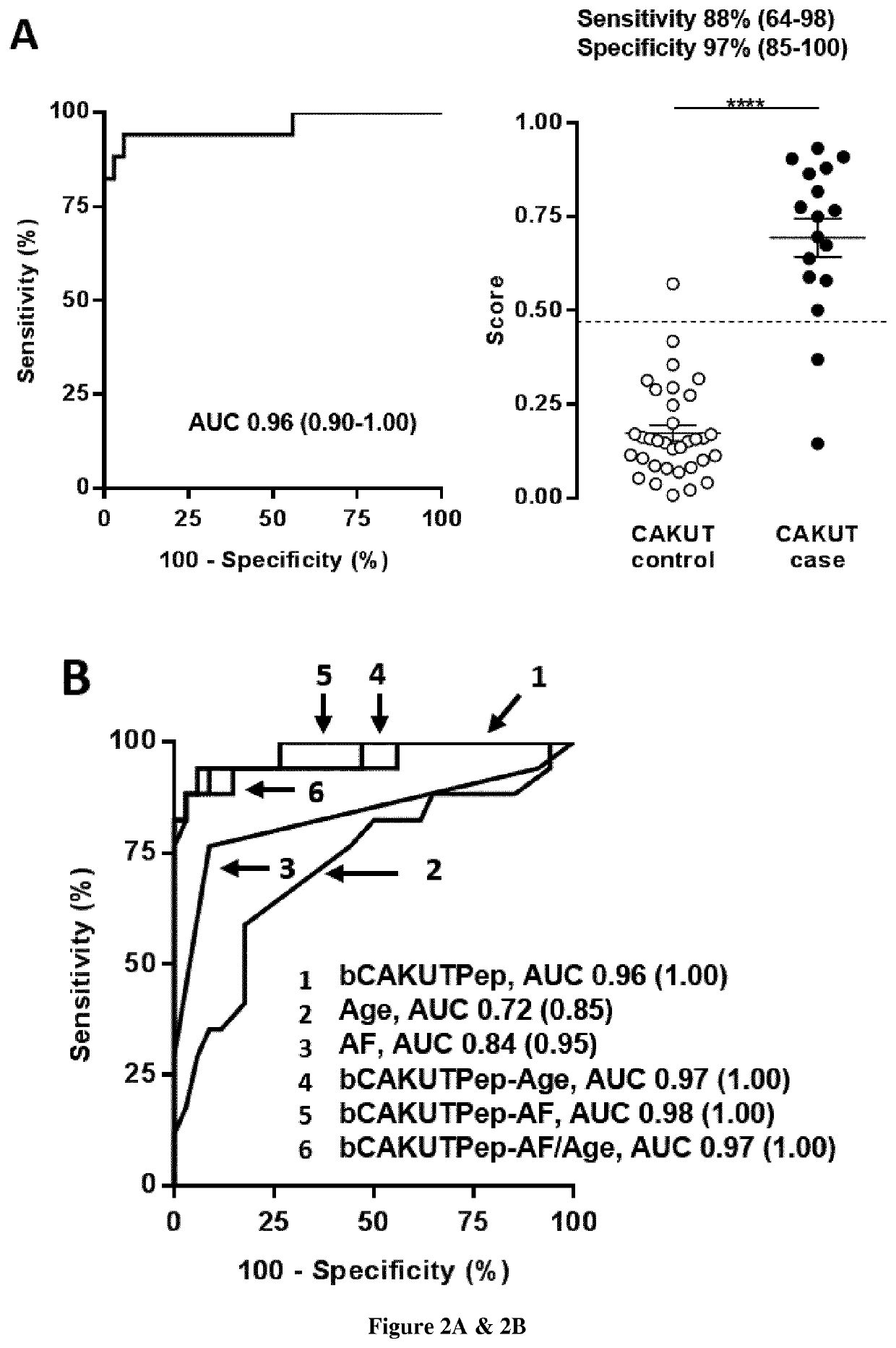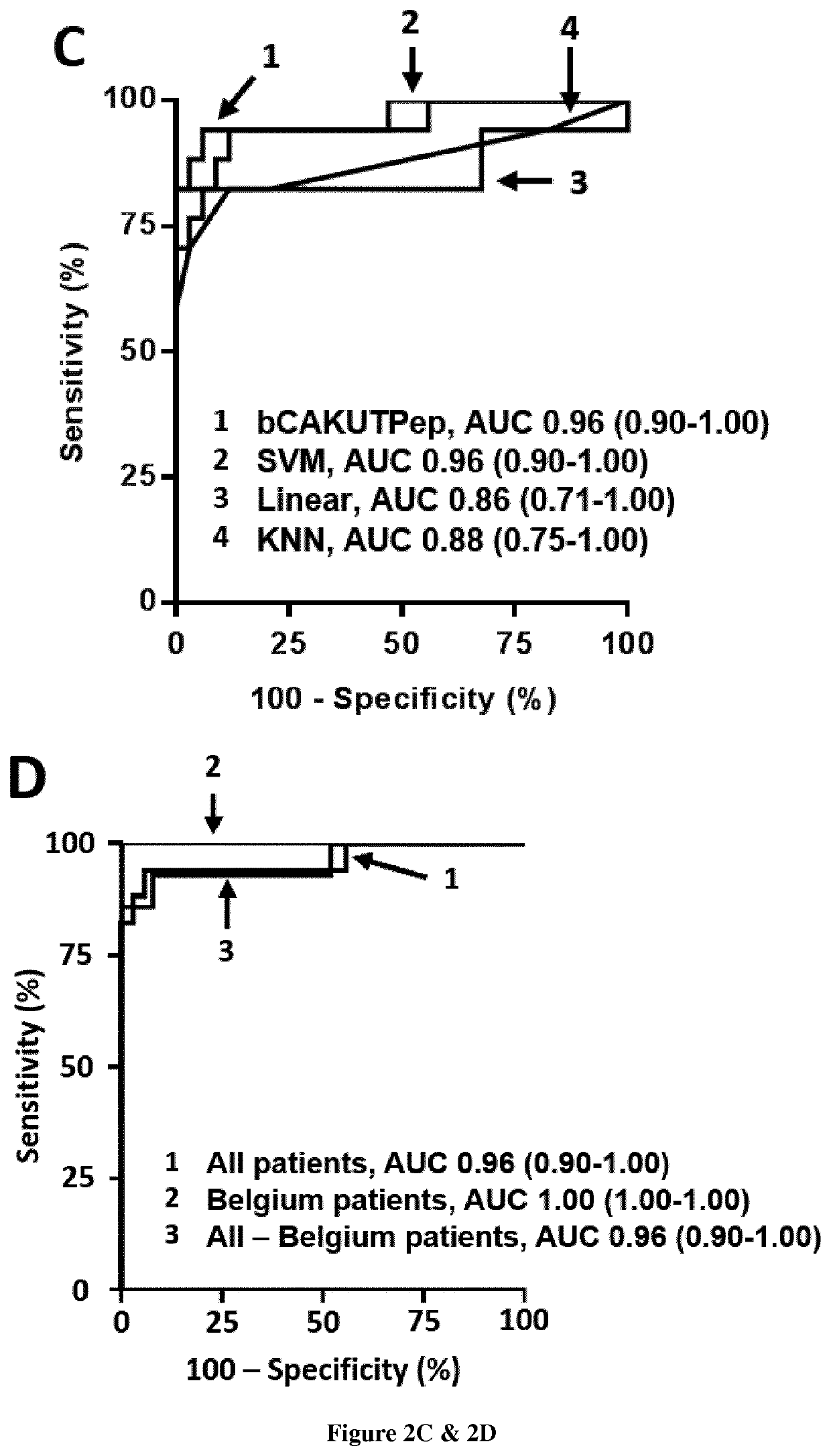Use of amniotic fluid peptides for predicting postnatal renal function in congenital anomalies of the kidney and the urinary tract
a technology of amniotic fluid and amniotic fluid, which is applied in the direction of biological material analysis, material analysis, instruments, etc., can solve the problems of difficult to predict the outcome of postnatal renal function, and the invasive testing such as the assessment of fetal serum 2-microglobulinsup>7 is rather controversial
- Summary
- Abstract
- Description
- Claims
- Application Information
AI Technical Summary
Benefits of technology
Problems solved by technology
Method used
Image
Examples
example
[0053]Methods
[0054]Study Patients
[0055]Two-hundred women consented to participate in the study, including 178 originally identified as having a pregnancy with a fetus presenting bilateral CAKUT (data not shown) and 22 from non-CAKUT pregnancies. The 22 samples from non-CAKUT fetuses were obtained from pregnancies tested, but being negative, for chromosomal abnormalities. During follow-up of the 178 CAKUT patients, 28 pregnancies were excluded. The trial was performed in accordance with the Declaration of Helsinki and with Good Clinical Practice guidelines. Patients were recruited in France and in Belgium. For all patients definite information on the renal status after 2 years of postnatal follow-up was obtained. The research was approved by national ethics committees (No RCB 2010-AO1151-38, France and S 55406 and B32220096569, Belgium) and informed consent was obtained from each participant.
[0056]Fetopathology and Analysis of Renal Function
[0057]Fetopathology was assessed for fetuse...
PUM
| Property | Measurement | Unit |
|---|---|---|
| diameter | aaaaa | aaaaa |
| diameter | aaaaa | aaaaa |
| voltages | aaaaa | aaaaa |
Abstract
Description
Claims
Application Information
 Login to View More
Login to View More - R&D
- Intellectual Property
- Life Sciences
- Materials
- Tech Scout
- Unparalleled Data Quality
- Higher Quality Content
- 60% Fewer Hallucinations
Browse by: Latest US Patents, China's latest patents, Technical Efficacy Thesaurus, Application Domain, Technology Topic, Popular Technical Reports.
© 2025 PatSnap. All rights reserved.Legal|Privacy policy|Modern Slavery Act Transparency Statement|Sitemap|About US| Contact US: help@patsnap.com



